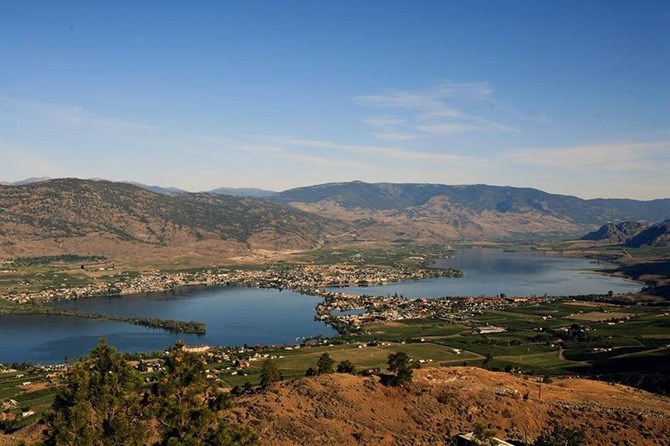
The Osoyoos Lake Water Science Forum, a cross border conference discussing the Okanagan River watershed, took place last week in Osoyoos.
Image Credit: Wikimedia Commons
October 14, 2015 - 2:30 PM
PENTICTON - Those with a stake in the Okanagan River watershed on both sides of the 49th parallel gathered in Osoyoos last week to exchange ideas, discuss this year’s drought conditions, and work towards a more cooperative relationship in the management of the Okanagan River.
The conference, which first took place in 2007, happens every four years and the third Osoyoos Lake Water Science Forum took place Oct. 7 to 9 at the Sonora Centre in Osoyoos.
Okanagan Basin Water Board Executive Director Anna Warwick Sears, who took part in the conference, says the forum was geared toward bringing together British Columbians and Washington State residents who share the Okanagan Basin.
"Personally I wanted to hear about their water supply issues this summer, because the Washington State drought came sooner and harder than ours did. On the Washington State side, the Similkameen comes down to the Okanagan River just south of the border, but this year the Similkameen suffered extremely low levels, so they were all struggling because of that,” she says.
Warwick Sears says it’s normal in any given year for low flows out of Osoyoos Lake, but very unusual to have such a low flow out of the Similkameen. She says American irrigators and salmon stocks were negatively affected by the unusual conditions.
Warwick Sears says Canada has no legal obligation to supply water to the Americans, but there is local interest in ensuring fish habitat is provided so fish can not only arrive at their spawning grounds, but get there healthy enough to be able to spawn.
“Because of the high water temperatures experienced in the Okanagan River this summer, the expected salmon migration of hundreds of thousands was reduced to between seven to 30,000,” she says. “It was quite a critical year, which made it a very interesting time to talk to our counterparts in Washington."
Warwick Sears also notes the recent expansion of the Osoyoos Lake Board of Control, with the addition of two Canadian and two American representatives. Both Warwick Sears and Osoyoos Mayor Sue McKortoff were part of the recent appointments, which Warwick Sears says was done in order to bring more local concerns to the board in hopes of addressing them within the board’s mandate.
Warwick Sears says she was made aware of some technical differences between the way the U.S. and Canada calculate water supply. The two jurisdictions plan to make a joint grant application to the International Joint Commission to combine both approaches in order to get a better idea of supply and demand for water in Osoyoos Lake.
“The main thing we want to do is be in a better position if this drought continues, or in future years of drought be able to manage the dam as carefully as possible and avoid water shortages."
Warwick Sears also notes the American’s system of water licenses, saying Washington State has an elaborate system set up to handle allocations of water during shortages, where in B.C. this summer, most water use reduction was voluntary.
“It was something to think about, are there more formalized ways we can have for people to share water? Not like a water market, but having better ways to share water between those who need it and those who don’t in any given year,” she says.
The American contingent was interested in hearing about the Okanagan Basin Water Board’s work to get utilities to work together and their 'Make Water Work' program.
“They don’t have anything like that down there, and we heard from staff there was interest in that,” Warwick Sears says.
To contact the reporter for this story, email Steve Arstad at sarstad@infonews.ca or call 250-488-3065. To contact the editor, email mjones@infonews.ca or call 250-718-2724.
News from © iNFOnews, 2015